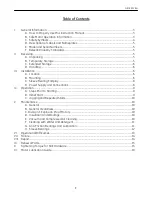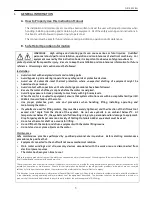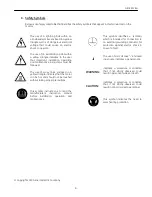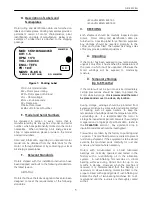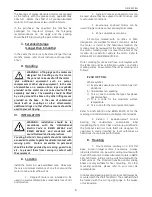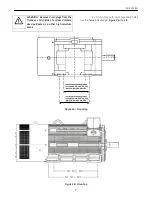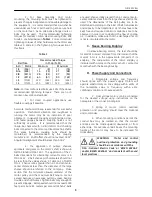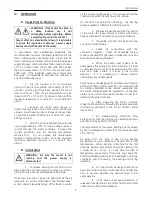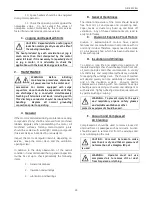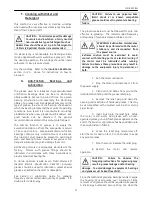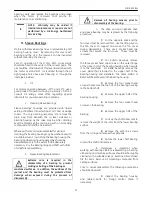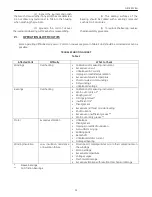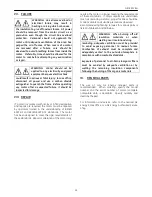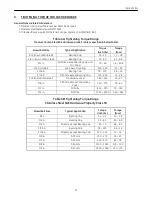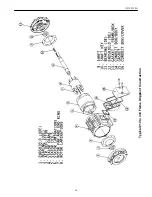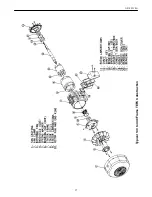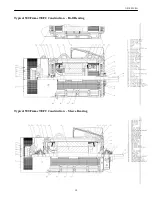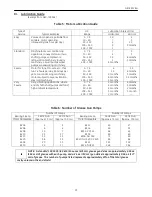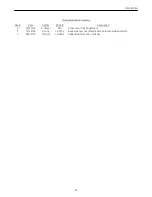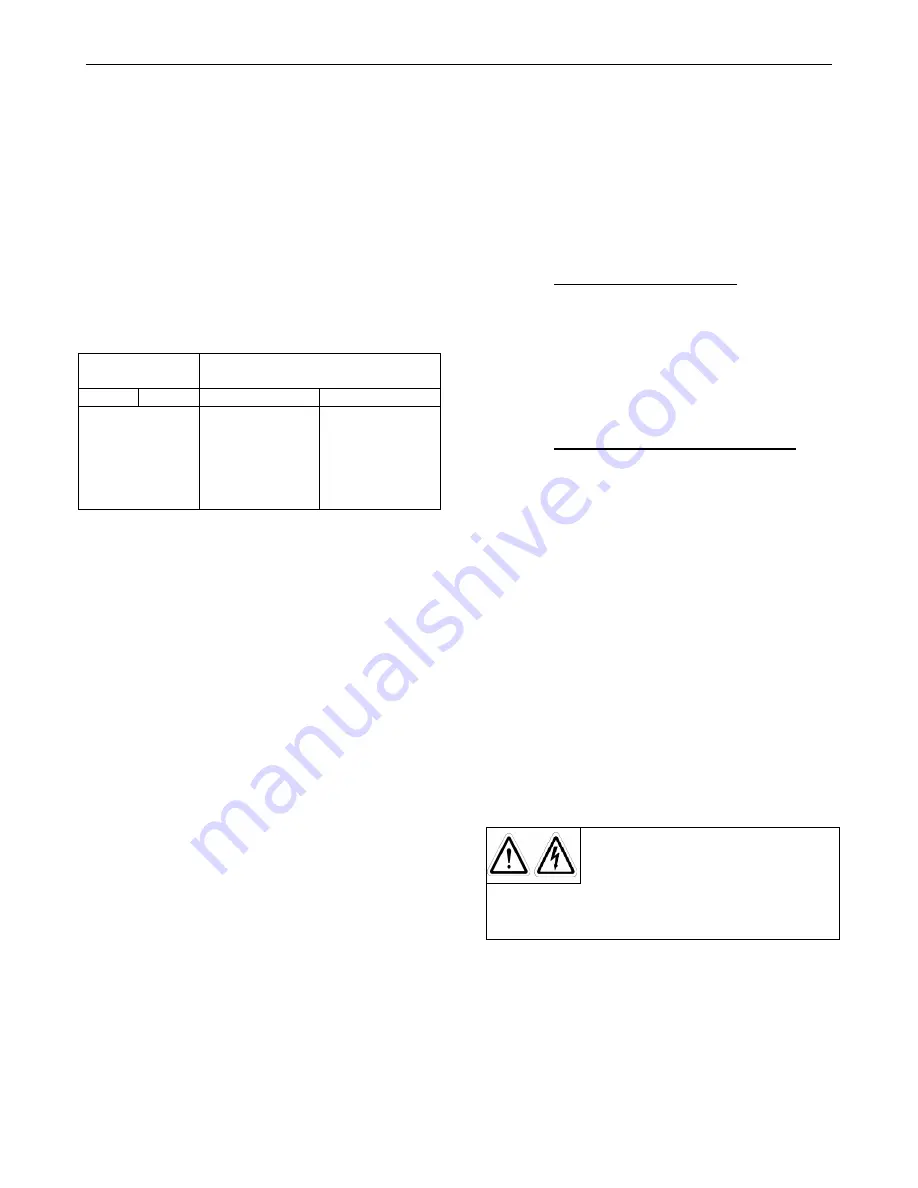
GEI-56128H
8
3. For base assembly and motor
mounting, the mounting bolts must be tightened to
prevent changes in alignment and possible damage to
the equipment. It is recommended that a washer be
used under each nut or bolt head to get a secure hold
on the motor feet. As an alternative, flanged nuts or
bolts may be used. The recommended tightening
torques for medium carbon steel mounting bolts, SAE
Grade 5, are listed below in
Table 1
. For recommended
tightening torques of other hardware on the motor see
tables 4A, and 4B in the Tightening Torque section of
this book.
Table 1
Bolt Size
Recommended Torque
in Ft-Lb (N-M)
Inch
Metric
Minimum
Maximum
1/4
(M6)
7
(9)
11
(15)
5/16
(M8)
14
(19)
21
(28)
3/8
(M10)
25
(34)
37
(50)
1/2
(M12)
60
(81)
90
(122)
5/8
(M16)
120
(163)
180
(244)
3/4
(M20)
210
(285)
320
(433)
Note:
For low carbon steel bolts, use 50% of the above
recommended tightening torques. There are no ID
marks on low carbon steel bolts.
4
. For direct coupled applications use
flexible couplings if possible.
Accurate mechanical lineup is essential for successful
operation. Mechanical vibration and roughness in
running the motor may be an indication of poor
alignment. In general, lineup by straight edge across,
and feeler gauges between coupling halves is not
sufficiently accurate. It is recommended that the
lineup be checked with a dial indictor and checking
bars connected to the motor and load-machine shafts.
The space between coupling hubs should be
maintained as recommended by the coupling
manufacturer. Shaft offset should not exceed 0.002”.
Angular misalignment should be less than 0.002”.
4. The application of pulleys, sheaves,
sprockets, and gears on the motor’s shaft is shown in
NEMA Standard MG1-14.07. The application of the V-
belts dimensions for alternating current motors is in
MG1-14.42. V-belt sheave pitch diameters should not
be less than the values shown in Table 14-1 of NEMA
MG-1. Sheave ratios greater than 5:1 and center-to-
center distances less than the diameter of the large
sheave should be referred to the Company. Make
certain that the minimum allowed diameter of the
motor pulley and the maximum belt tension are not
exceed because an excessive pull may cause bearing
trouble and shaft failures. Tighten belts only enough to
prevent slippage. Belt speeds should not exceed 5000
feet per minute (25 meters per second). When V-belts
are used, sheave ratios greater than 5:1 and center-to-
center distances less than the large sheave shall not be
used. The dimensions of the belt pulley are to be
determined according to the kind of belt, transmission
and capacity to be transmitted. Vent holes have to be
kept free and required minimum distances are to be
observed in order not to obstruct the flow of cooling
air. In addition, make sure that the discharged hot air
is not re-circulated into the motor.
C. Sleeve Bearing Endplay
On sleeve-bearing motors, the feet should be
located at a correct distance from the load so that the
motor’s rotor is in the approximate mid-point of its
endplay. The mid-position of the rotor’s endplay is
indicated with a mark on the motor’s shaft. Locate this
mark flush with the bearing housing.
D. Power Supply and Connections
1. Nameplate voltage and frequency
should agree with the power supply. Motors will
operate satisfactorily on line voltage within ±10% of
the nameplate value or frequency within ±5%,
combined variation not to exceed ±10%.
2. Dual voltage motors can be connected
for the desired voltage using instructions on the
nameplate or the connection diagram.
3. Wiring of motor, control, overload
protection and grounding should meet the National
and Local codes.
4. When mounting conditions permit, the
conduit box may be rotated so that the conduit
entrance can be made upward, downward, or from
either side. For oversize conduit boxes, the mounting
height of the motor may have to be increased for
accessibility.
WARNING
:
Motor and control
overload protection and grounding
should be in accordance with the
‘USA -National Electric Code’ or ‘BS/EN 60204-1’
and/or ‘BS/EN 60204-11’ and consistent with sound
local practices
.


